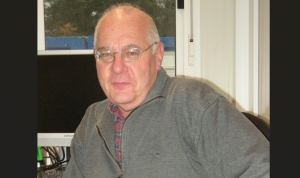INTOR: The international fusion reactor that never was
It all started with an American president meeting a Soviet Secretary-General and agreeing that cooperating in the field of fusion science was a promising way of easing tensions between their two countries.
The year was not November 1985 but June 1973; the place Washington D.C. and not Geneva, and the characters in the plot not Ronald Reagan and Mikhail Gorbatchev but Richard Nixon and Leonid Brezhnev.
This meeting, more than 35 years ago, was to lead to the first truly international effort to develop a large experimental fusion reactor. On 23 November 1978, the "Steering Committee of the INTOR Workshop" convened in Vienna for the first time and for the following decade, hundreds of scientists and engineers in the US, the USSR, Japan and Europe were to tackle such issues as tritium breeding blanket modules, divertor heat load and niobium-titanium coil winding.
INTOR—INternational TOkamak Reactor—was very close to ITER in its concept, and very different in its organization. "The INTOR Steering Group would gather two to four times a year at IAEA in Vienna," remembers Masayoshi Sugihara, then a young physicist at JAERI, the Japan Atomic Energy Research Institute. "They would dispatch what we called 'homework' to each of the national teams, which all had a specific area of expertise."
Each "national team" also had a large national project to devote their energy to: TFTR for the US, JET for Europe JT-60 for Japan, T-15 for the USSR. Nevertheless, each country started to grope for the next step to these large projects. "Everyone recognized that the next step to these machines was going to be very costly and no one was absolutely confident in their financial capacity to build them. So in a way, INTOR was a kind of safety net."
Andrei Kukushkin, who worked at the Kurchatov in 1978, says he "really believed in INTOR as a machine," but that three years into the project "things started cycling" and he felt his faith faltering.
For want of strong governmental determination, the INTOR Workshop never reached the design phase, and was eventually folded into the new ITER Project in the autumn of 1987. "ITER's figures today are not that different from those of INTOR," says Kukushkin. "But in ITER, there was a will to involve the people who actually do the work in the definition and design processes. INTOR's organization didn't allow that. And of course, the international collaboration today cannot be compared to what it was then ... even if, for me, INTOR was like a big window opened on the outside world."



